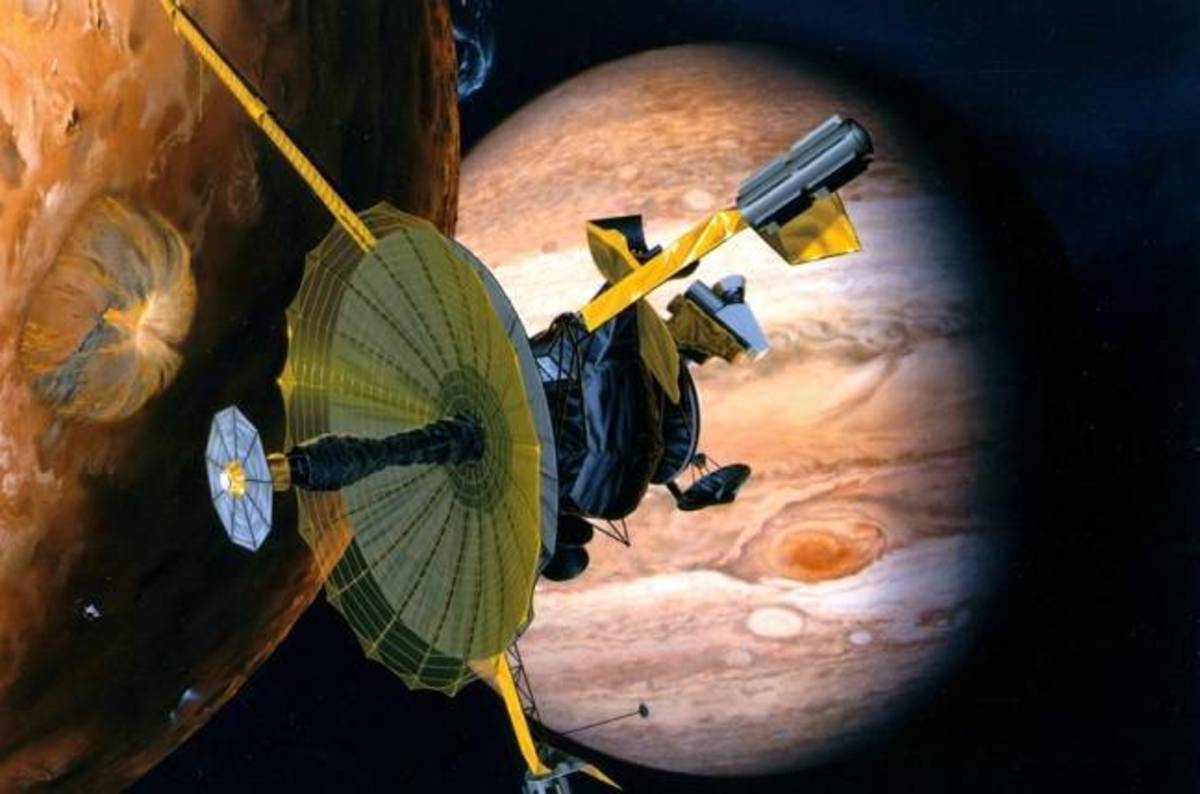
NASA scientists have made some new discoveries about Jupiter's giant moon Ganymede, thanks to a dedicated team, an elderly VAX machine and 20-year-old data from the long-defunct Galileo probe.
Fifteen years after Galileo (no, not that one) ended its days with a plunge into the atmosphere of Jupiter, NASA scientists have resurrected the 20-year-old datasets and added more detail to the puzzle of Ganymede's magnetosphere.
The new data, published in Geophysical Research Letters, paints a picture of a stormy environment, with particles blasted off the moon's icy surface by incoming plasma raining down from Jupiter.
Data from Galileo's Plasma Subsystem (PLS), which measured the direction, density and temperature of the plasma, also showed an explosive magnetic event occurring between Jupiter and Ganymede’s magnetic environments.
This event, known as a "magnetic reconnection", was caused by the tangling and snapping of magnetic field lines.
While studying the data, scientists also noted that Galileo had passed over Ganymede's auroral regions and, by combining the recovered output with observations from the Hubble Space Telescope, were able to pin down the precise location of the auroral zone.
Unlike Earth's aurora, which are the result of solar windsGanymede's appear to come from the plasma surrounding Jupiter. Scientists speculate that the brightness of Ganymede's aurora may be caused by plasma flows arising from the magnetic reconnection event.
Galileo was deployed from the Space Shuttle Atlantis during the STS-34 mission in 1989 having been delayed from 1986 following the Challenger accident.
The orbiter arrived at Jupiter in 1995 and spent the next eight years studying the gas giant and its satellites. After an extended mission, the ailing probe was deorbited in 2003 to avoid an unwanted impact on Europa.
Glyn Collinson, a space scientist at NASA's Goddard Space Flight Center, told The Register why scientists were picking through the Galileo data once again:
As Bill [Paterson, a member of the original Galileo team] says, "We always knew there was lots of valuable stuff in the dataset that wasn't published during the course of the mission." However, it is a very tough dataset to work with. A few years ago we proposed to NASA to go back and see what the plasma instrument saw at Ganymede, and NASA's response was, basically, "prove it."
With the aid of fellow Galileo veteran Kent Ackerson, Paterson managed to fire up the original VAX machines to handle the 30-year-old variant of VAX-FORTRAN required by the Galileo PLS analysis software.
The decades-old data was processed and carefully analysed and, as Collinson puts it, "the quality of what we found exceeded our wildest hopes and dreams".
While data from Io has been extensively worked over, doubtless partly due to its crowd-pleasing volcanic antics, much of the data from the three other moons studied by Galileo – Europa, Ganymede and Callisto – had yet to be published, due to the complexity of the datasets and analysis effort required.
However, with a fleet of spacecraft from both NASA and the European Space Agency (ESA) due at Jupiter in the coming years, interest in the Galileo archives has been renewed, as Collinson explains:
"There's intense interest in Europa, Ganymede, and Callisto, because they are the target of two future flagship missions, the American NASA Europa Clipper, and ESA's JUICE Ganymede orbiter (which will make flybys of both Europa and Callisto)."
He concludes: "Measuring plasmas at these moons is a key objective for both missions, and the pioneering exploration by Galileo will be instrumental in planning these missions."
If there's a moral to the story it is look after those backups – and the systems needed to run them. You never know when they might be needed. ®
Sponsored:Minds Mastering Machines - Call for papers now open
Read Again NASA dusts off FORTRAN manual, revives 20-year-old data on Ganymede : https://ift.tt/2HH3eas
Bagikan Berita Ini















0 Response to "NASA dusts off FORTRAN manual revives 20-year-old data on Ganymede"
Post a Comment